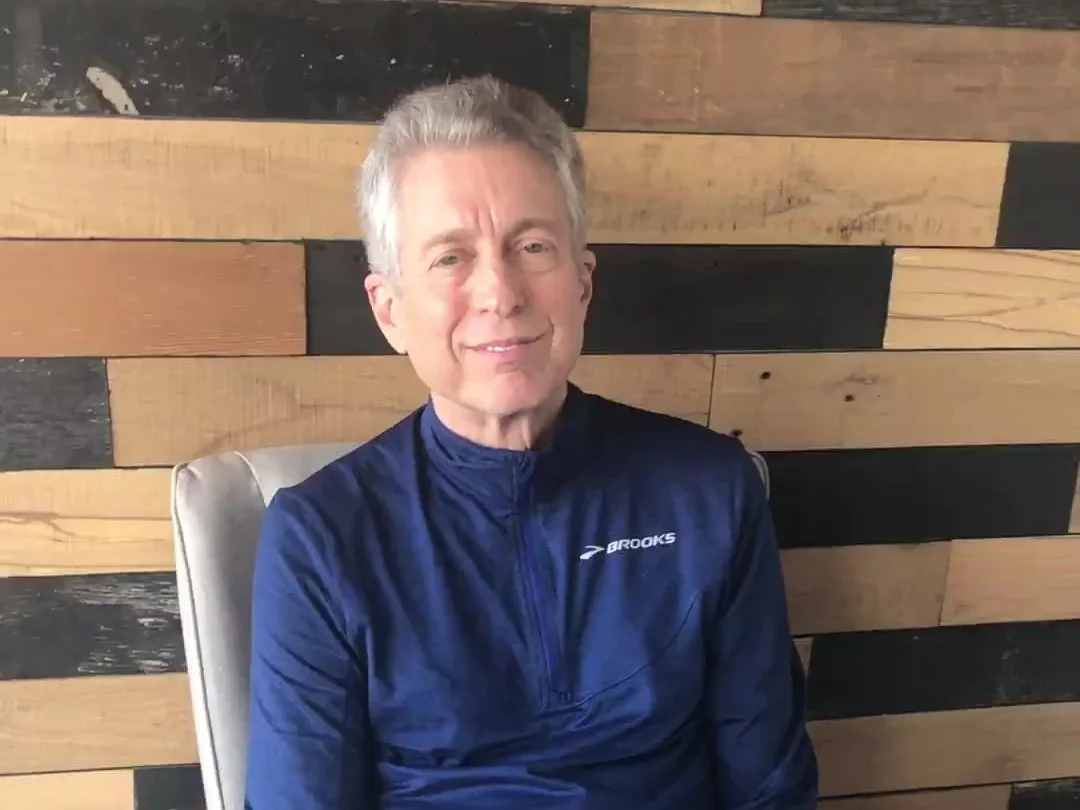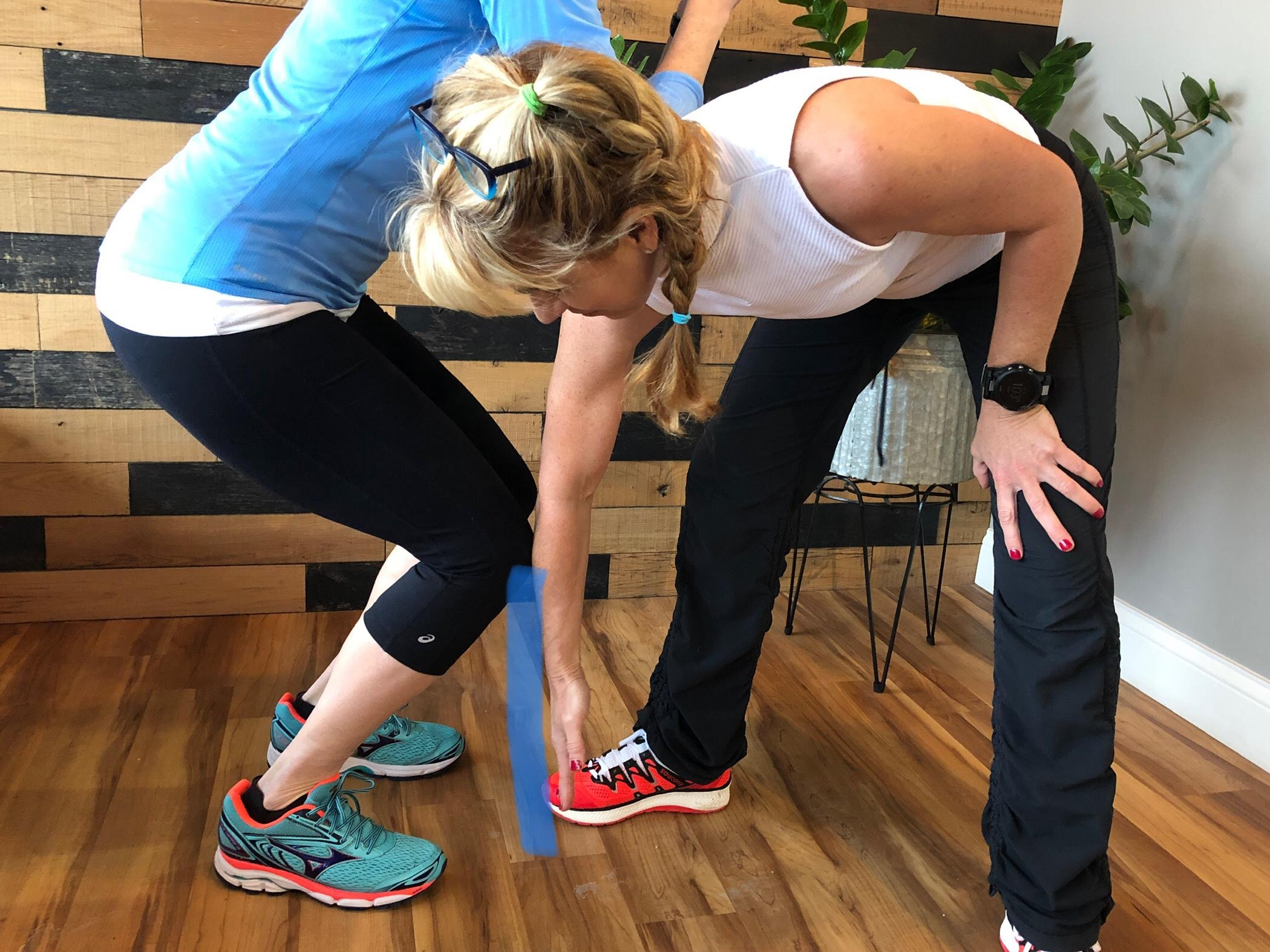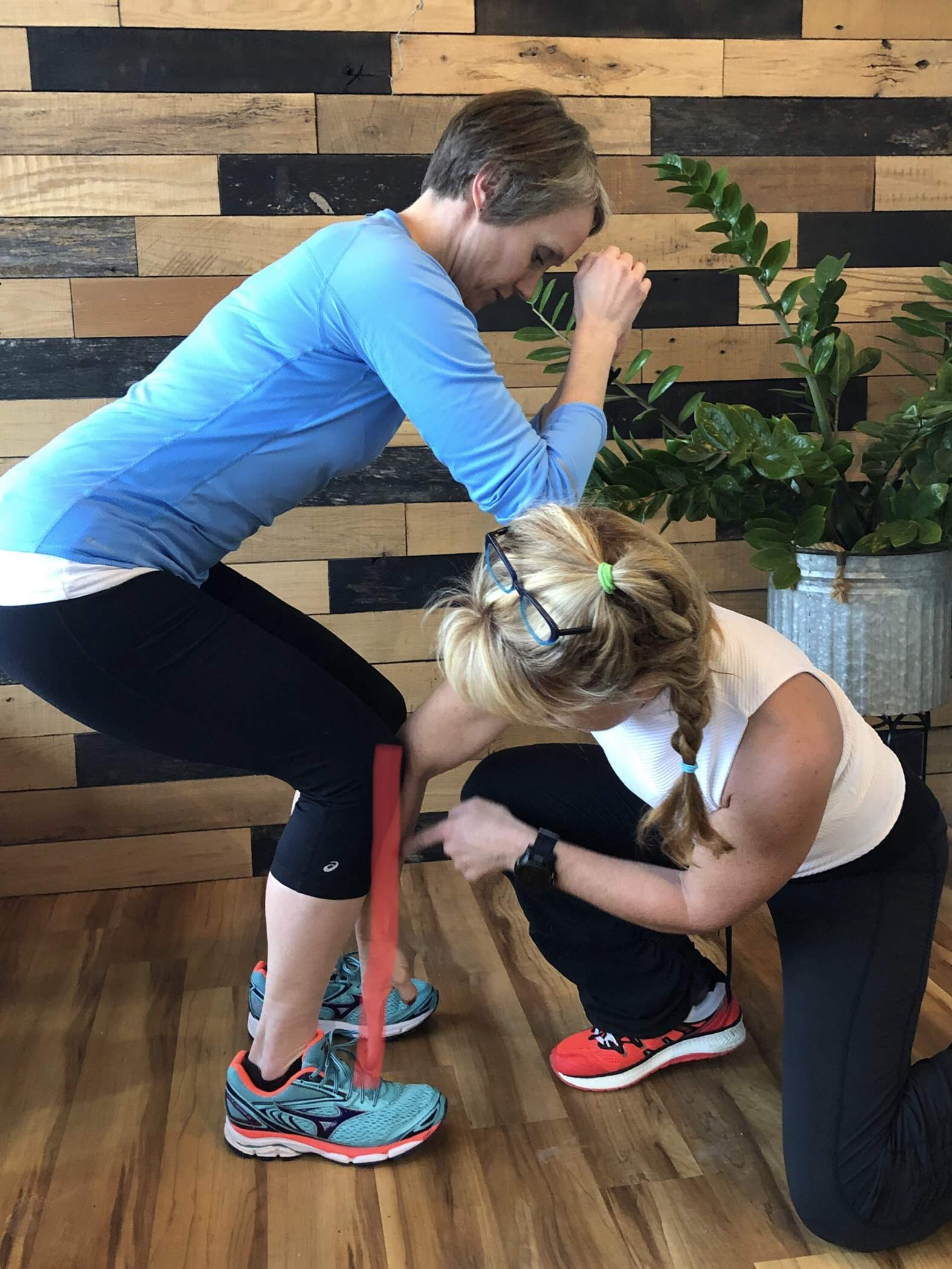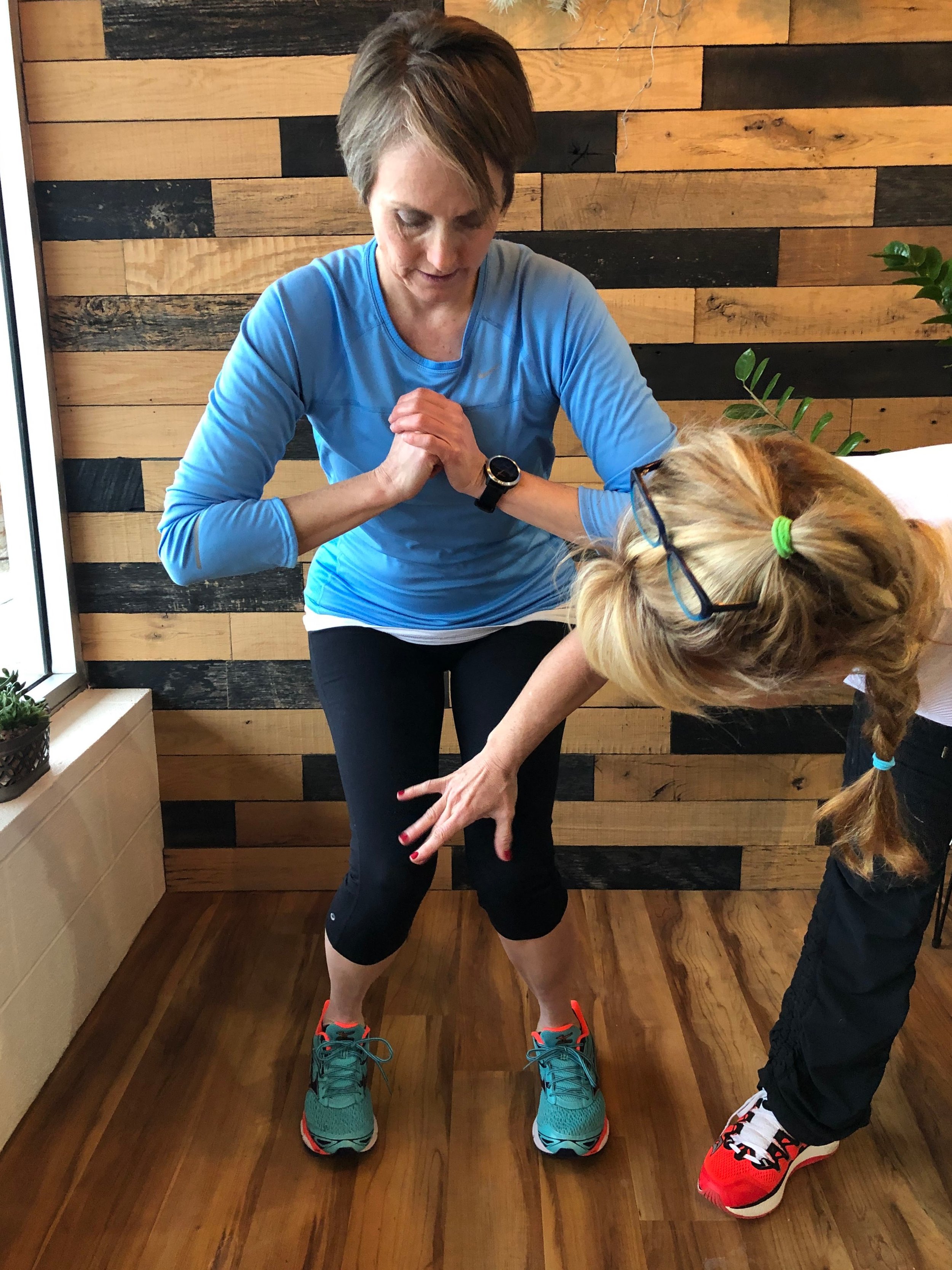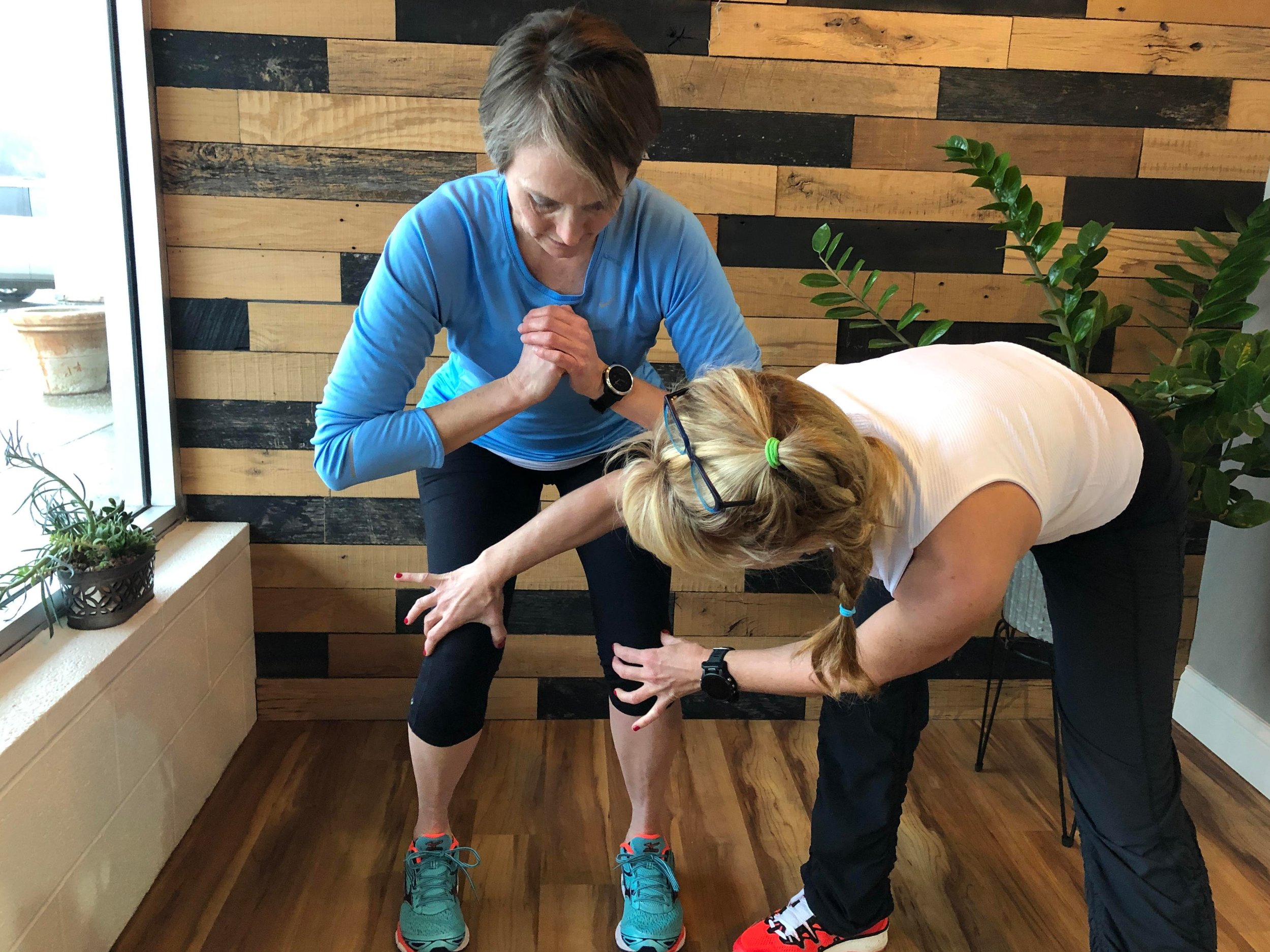Take Care When Riding Upright on the Trainer
Who’s guilty of warming up on the bike trainer or stationary bike sitting upright, hands free, scrolling through social media? Me! Riding upright in the saddle with unintended excessive lordosis (arch) in the lower back could cause back pain and injury (see photos above).
Mike Irwin, owner of BicycleFit Rx recently weighed in on this subject: "For triathletes, the nose of the saddle is purposefully adjusted in more of a downward tilt for proper fit, so sitting upright will tend to cause even more anterior pelvic tilt. Once the athlete starts pedaling in the upright position and the hips are moving, it forces the back into more extension (tilt)."
So, friends, be aware of proper posture when riding upright and use a strong core to stabilize and prevent back injury. Otherwise set that phone down and lean forward, hands or forearms on the bars!
Article Co-Contributor: Mike Irwin
Coach Amy Across the Globe
I was pleased as punch to get a message from Michael in Germany telling me about his Garmin Coaching 5K training, “I’m now in the third week of your training plan and getting better and feel a bit stronger. I just wanna say thanks, and I’ll keep going forward to reach my personal goals.”
It puts me over the moon with joy to hear how all of my Garmin Coach, CoachAmyPT patients, and Roadrunners of Kansas City athletes are doing. Read the full article on the Roadrunners of Kansas City blog to see how our clients and athletes can share their updates and make our community stronger.
Don't Run on a Balance Beam
Ever have muddy, bruised or bloody shins or ankles after a run? This can happen with a crossover running gait. Not only does it leave unwanted scuffs on your ankle, it is inefficient and can cause IT band pain, knee pain or shin splints.
A crossover run gait is a narrow step width. To the trained eye, it kind of looks like the runner is running on a balance beam. One leg drifts inwards near the front of the other with each step. This tends to happen in runners with weak hips, and with some runners sets in with fatigue towards the end of longer runs.
Runners lose power with this gait because the hips are not in the ideal position for push off, and more energy is required to push off the ground from the crossed over position. Landing in the cross over position also puts added strain on the the lateral line (gluteus medius, ITB, tibia) and can result in pain and injury.
Most runners don’t even realize they have faulty gait patterns. A professional running gait evaluation can help bring this to light. Changing run gait should be done gradually and with professional assistance to avoid injury.
Experiencing pain while running, or suspicious of an improper run gait? Schedule an appointment with CoachAmyPT for a thorough evaluation and treatment plan.
Like our page on Facebook and Instagram for more fitness and training tips and trends.
Get More From a Strong Core
In today’s fitness focused world, we’ve all heard a lot of buzz around “strengthening the core.” Wondering what all of the hype is about? Having strong core muscles is beneficial for everyone, not just athletes. A strong core improves posture and stability, and can help prevent pain and injury from an active lifestyle.
With a strong core our movements are more efficient, and we gain more power and function from the upper and lower extremities. With a weak core, we are like a “rag doll”; our arms and legs move less efficiently, and energy is wasted.
For endurance athletes, a strong core translates to more power in the arm and leg swing while running, the pull and kick while swimming, and the push and pull while cycling. A strong core can help everyone prevent back pain from daily tasks such as groceries, gardening, and laundry.
Contrary to popular belief, a strong core isn’t just strong abs. Our core encompasses the entire cylindrical column of muscles ranging from above the shoulders to below the hips. The best way to strengthen these muscles is with slow, intentional and controlled, quality movement patterns. CoachAmyPT offers core strengthening classes designed for both beginners and advanced athletes.
Join us for the first Spring session of core classes beginning the week of March 4th, and feel stronger and prevent injury at work and play. Hurry, space is limited.
Watch an interview with CoachAmyPT patient, Larry, who experienced dramatic health benefits from taking Phoenix Core strengthening classes in conjunction with physical therapy.
Like our page on Facebook and Instagram for more fitness and training tips and trends.
How to Treadmill Safely
Ice, deep snow and sub zero temperatures are driving many endurance athletes indoors to the treadmill this winter. Unfortunately, running a long distance on the treadmill may do more harm than good especially if used as a short term substitute to overground running without adjusting for the fact that it is a different surface. Coach Amy explains why runners should exercise caution when choosing the treadmill and shares tips on how to treadmill safely in this article from the Roadrunners of Kansas City blog:
Top Five Training Errors that Lead to Injury in Runners
Inquiring minds want to know…“When Coach Amy speaks at Rockhurst University, what is it about?”
Getting to the bottom of a runner’s injury is like solving a puzzle; the four corners are strength, mobility, biomechanics and training. Coach Amy explains how to evaluate the patient’s training history for potential errors that contribute to injury and how to modify training during treatment.
Here are the top five training errors that Coach Amy finds lead to injuries:
Increasing total weekly mileage and long run mileage too quickly.
Lack of recovery between training runs within the building phase, after races and between seasons.
Not enough, too much or the wrong kind of cross training.
Lack of varying intensity of hard and easy runs.
Changing running form, surface, or shoe type without a slow, gradual introduction and without professional guidance.
Personalized coaching can help prevent these errors. If injury does occur, physical therapy with a therapist that specializes in running can speed up and improve success with recovery.
Need for Speed
Did you know Coach Amy is actually a coach? Amy is a running coach who owns and operates the running club, Roadrunners of Kansas City. If you are a distance runner or endurance athlete, there is so much more that goes into achieving your goals than just getting in your weekly miles.
RRKC offers weekly outdoor speed workouts (Winter and Spring) that incorporate running drills, intervals, fartleks, supersets, hill training, and more. Workouts are personalized to each athletes' goals and experience level. The purpose of speed training is to improve efficiency and power, and to teach the body to run under fatigue. Coach Amy’s method includes a focus on both running form and the running mind.
RRKC’s first 6-week speed work session starts on February, 12th. Sessions are held at various outdoor parks on Tuesday evenings at 6:00 p.m. Space is limited, so act fast to run fast!
Proper Squat or Not?
Squats have rightly earned their reputation as a great cross training exercise for athletes to increase strength especially in the glutes. However, repetitive improper squat form can result in painful overuse injuries such as tendinitis or even damage to the knee joint or behind the kneecap.
In a correct squat position, the front of your knees are parallel to each other and in line with your ankles (not your toes). In other words, most of your weight is in your heels, and you are leaning far back into an almost seated position. If you squat improperly with your knees caving in towards each other (knock knees) or with your knees extending over the front of your toes, you are significantly increasing the force on the knee and causing excessive strain. This may cause knee pain during or after exercise and could cause injury.
If you suspect your knee pain could be the result of improper squat form, rest for a couple of days. If you experience pain when you return to exercise, seek an evaluation from a medical professional. If you find the correct squat position is difficult to achieve or maintain, you can modify by holding onto a stationary object such as a bar or tabletop while squatting until you find your balance.
I’m surprised by how many people in fitness centers I see doing squats improperly. Even if you think you’re doing squats correctly double check yourself in the mirror, and make some form tweaks if necessary. After all, you want all your hard work to help you achieve success, not injury!
Why Runners Shouldn't Sit Like A Tailor
The Tailor Sit
Sitting in the tailor position is comfortable for a lot of people, but for the runner, it comes at a hefty price. Tailor sitting for a prolonged period of time puts strain on the knees, over stretches some muscles and shortens others. One of the key muscles plays a big role in running: the PIRIFORMIS.
Sitting in the tailor position lengthens the piriformis making it weak; imagine the muscle is like a really old, saggy stretched out rubber band. It doesn’t spring well does it?
The piriformis is supposed to stabilize the hip when the run foot strikes the ground. Running with a weakened one can lead to injury of the muscle itself as well as other muscles, nerves, and joints of the back, hips, knees or feet!
The weak piriformis is deceiving. It will often times feel tight even when it really isn’t because the brain is sending messages to it to contract. This can also irritate the sciatic nerve causing a big “pain in the butt”.
What to do with an overly long piriformis? Foam roll, strengthen and if more help is needed, schedule an appointment at CoachAmyPT for Active Release, Dry Needling and functional strengthening.
New Pricing Menu Effective January 1, 2019 for Self Pay Patients.
Please make note of our new self pay pricing as of January 1st, 2019.
Self Pay Evaluation $150
Self Pay Visit $100
Self Pay with Neurological Dry Needling $110
Coach Amy is accessible via email outside of business hours to answer questions and concerns between appointments.





